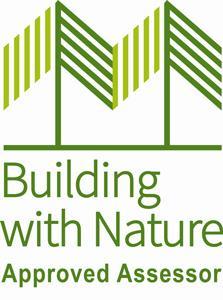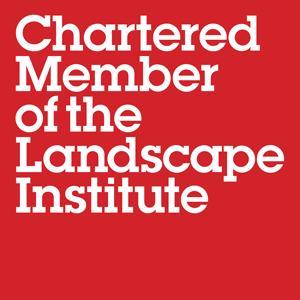‘Study nature, love nature, stay close to nature. It will never fail you.’
(Frank Lloyd Wright)
At Design with Nature, we offer a wide range of landscape architectural services from feasibility related work to help inform the type of development proposed, right through to the administration of landscape contracts and the provision of advice on establishment and aftercare operations. At the heart of all this is a strong desire to deliver the best possible scheme for any given site.
Our Landscape Architectural Services
Commissioned prior to any design work being undertaken these plans or reports, would arise out of a detailed analysis of the site and its immediate landscape context. They would, based on an open or more specific brief, endeavour to identify opportunities and constraints in relation to achieving the effective implementation of SuDs, achieving 10% Biodiversity Net Gain and strengthening the sites genius loci.
The initial visit would ascertain the exact extent of a sites environmental potential and identify important features which should be retained. If deemed to be required, an ecological appraisal could be commissioned to survey existing habitats and identify any further investigations or tree survey may need to accompany any future planning application. Every area of the site would be thoroughly explored, with photographs taken and in some instances soil samples collected. Where appropriate some site history investigation is carried out to both inform future design development and reveal any potential development related risks (eg. concealed mineshafts). These reports will also look at the scope for utilising on site resources to minimise overall construction costs and review the alignment of proposals with the local planning policy framework.
We have recently launched a brand-new service which offers clients the opportunity to secure a green infrastructure benchmark for their developments. Building with Nature (BwN) is the UK’s first green infrastructure benchmark comprising of twelve quality standards (6 core, 2 well-being, 2 water and 2 wildlife) for placemaking and place-keeping from the point of view of both planners and developers. Our director Mark Stefan, is an Approved Building with Nature Assessor, one of just a few covering the Midlands and the North-West of England.
A growing number of local authorities are turning to Building with Nature to help frame their green infrastructure related policies and to define ‘what good looks like’. Increasingly, developers are also using the Standards as a guide for the creation of better quality places for people and wildlife.
If it meets the standards, a BwN award can provide a development scheme with independent and formal verification that can be used to market the scheme to potential customers. To find out more about Building with Nature visit www.buildingwithnature.org.uk. If you would like to find out how the BwN accreditation could help your next project please get in touch.
View Building with Nature website
Landscape and Visual Impact Assessments (LVIA’s) are used in consideration of proposed developments and are typically commissioned by a client at the request of the local planning authority. The evidence may be presented in a stand-alone report or included in an Environmental Impact Assessment (EIA). LVIA’s are prepared in line with the 3rd edition Guidelines for Landscape and Visual Impact Assessment (GLVIA) published by the Landscape Institute and include baseline studies, details of proposed development, description of the likely landscape and visual effects, mitigation and residual effects. We are also able to produce high quality photomontages and visualisations in order to inform and support the findings of the LVIA.
A landscape led approach at an early stage in a project allows us to explore how proposed developments can be sensitively integrated into their environment. This results in a more attractive landscape setting being created as well as in some instances resulting in lower overall construction and operating costs. Outline proposals (to RIBA Stage 2 / Landscape Institute’s Stage C) formulated by ourselves seek to incorporate all important site features, protect identified key views, provide sufficient space for a fully integrated sustainable drainage (SUDS) scheme, maximise active travel opportunities and increase levels of ecological connectivity. In the case of some developments, where several layout options may bunders consideration, the carrying out of an LVIA or LVA will be an integral part of helping to decide which site configuration to take forward.
Our typical service runs from the production of masterplans / sketch design layouts to RIBA Stage 3 / Landscape Institute’s Stage D (often with supporting images) through to detailed design, contract drawings, schedules of works, and specifications. For larger green infrastructure type projects, masterplans would be prepared focusing on the development of a site’s intrinsic character whilst ensuring that the resulting landscape design is as multi-functional and accessible as possible. Other areas of related expertise include Building with Nature accreditation and community engagement / consultation.
We can assist with the layout / detailed design and species composition of new woodlands which could range from the corner of a field to a complex covering many hectares. Strategically placed belts or blocks of trees can help integrate a development into its setting, provide shelter from adverse weather conditions, assist in cooling buildings in summer, intercept water flows, provide corridors for wildlife and create enormously therapeutic environments for people. For existing woodlands advice can be provided in relation to sensitive incorporation of car parking / other access improvements, siting of tourist accommodation and the development of related recreational facilities. A particular specialism is looking at adapting new and existing woodlands to both climate change and the ever increasing number of tree diseases. Where appropriate, clients can be assisted with the submission of Countryside Stewardship applications.
We are able on behalf of the client able to manage to the whole process of obtaining pre-app advice and subsequently submitting a planning application, coordinating the input of all the required specialists (which can typically include Arboricultural consultants, ecologists and drainage / highway / structural engineers). This service will often include the selection and commissioning of landscape / engineering contractors to carry out the work.
Although the level of required input will vary from project to project these duties can involve the preparation of an appropriate form of contract, chairing of pre-start / progress meetings (and associated production of minutes), monitoring of contractors programme and undertaking of visits in order to inspect the work being implemented on site to ensure that it is being carried out to the required standard (and to answer any queries / resolve any setting-out problems). In the absence of a Quantity Surveyor, instructions and variations are issued on behalf of the client in order to keep the project within the allocated budget. Prior to the holding of the Practical Completion meeting a schedule of defects is prepared and the making good of these by the main contractor is subsequently verified on behalf of the client.
Usually based on the results of an ecological appraisal (or phase 1 survey produced by others) and a detailed brief from the client these can make recommendations for the protection or enhancement of existing ecological features, as well as be focused on the achievement of broader landscape and ecological objectives. They can range from a relatively simple drawing to an extremely detailed report with associated illustrations and appendices. The timescales dealt with by these plans usually vary between five to ten years, although in the case of Biodiversity Net Gain Management Plans, produced by or in conjunction with ecologists this is 30 years.
Other Services
Arboricultural Surveys and Assessments
These are carried out in accordance with Trees in Relation to Construction (BS5837) and in the case of larger developments will include an arboricultural impact assessment. Advice can also be provided in relation to the retention, protection and management of individual trees.
We would love to see how we can add value to your project.
Please e-mail or call us on 01952 551307



